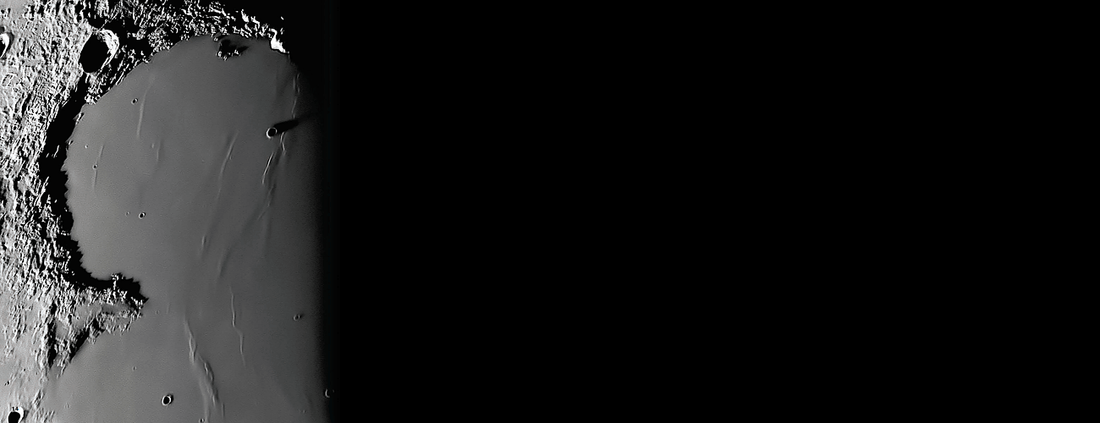Sinus Iridum, or Bay of Rainbows, is a stunning lunar feature that resembles a horseshoe-shaped bay along the northwestern shore of Mare Imbrium. With a width of 400 kilometers at its wide mouth, Sinus Iridum blends into the smooth plains of Mare Imbrium. This lunar feature was formed by a chance asteroid impact that occurred on the rim of the Imbrium Basin after it was formed. As a result, the "seaward" side of Sinus Iridum slopes towards the center of the Imbrium Basin.
The lava eruptions that filled the Imbrium Basin and created the dark Mare Imbrium also breached the lower portions of the rim of Sinus Iridum Basin. As the eruptions continued, the lava flows spilled into the smaller basin, burying the lower side of the rim and merging the interior of Sinus Iridum with the smooth surface of Mare Imbrium.
The rim of Sinus Iridum rises above the basalt floor, forming the Jura Mountains. The northern range of Jura Mountains extends into Mare Imbrium, creating a peninsula known as Promontorium Laplace. The southern end of the Juras terminates at Promontorium Heraclides, while the crater Bianchini is located along the northern edge of the Jura Mountains.
These unique lunar features make Sinus Iridum an interesting subject for astronomers and space enthusiasts alike. Whether viewed from the surface of the Moon or from the Earth, the Bay of Rainbows is a beautiful and intriguing lunar feature.





